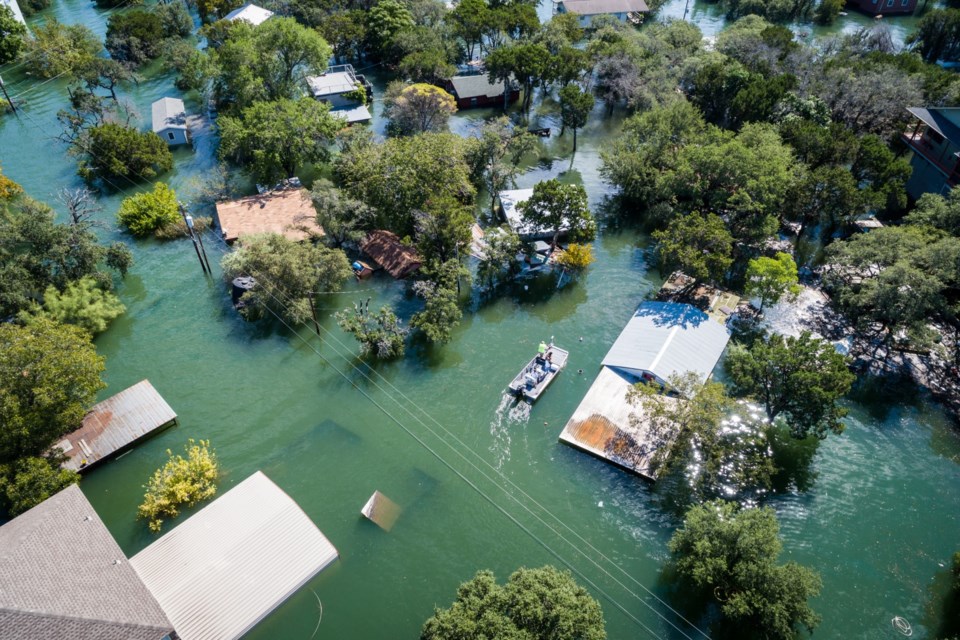THE CONVERSATION — Over the last year, Canada has made important progress toward making it easier for people to determine if they’re at risk from natural hazard disasters. But many people across the country still lack awareness about the risks they face and the steps they can take to prepare for them.
The summer of 2023 has been marked by , and across Canada.
As natural hazards and extreme weather events across the country, there’s no shortage of educational initiatives aimed at helping Canadian households and communities learn about and prepare for these risks.
The 2023 federal government budget proposed $15.3 million to create a where Canadians can access information about their exposure to floods. are already available for most provinces and territories.
The investment came on the heels of the release of Natural Resource Canada’s , an online platform that provides information about Canadians’ potential risk from earthquakes. In anticipation of the 2023 wildfire season, FireSmart Canada published an updated .
But it remains unclear whether — and which types of — initiatives are effective at raising awareness. Recent research shows that Canadians’ awareness and preparedness for natural hazard disasters is and among different segments of the population.
Inclusive resilience
There is insufficient research exploring how factors like the language, gender or socioeconomic status of at-risk Canadians influence disaster awareness and preparedness.
This is a significant blind spot in Canada’s disaster management. Studies from around the world show an individual’s decision to protect their home and family from hazards is mediated by an array of , , and factors.
People’s cognitive biases might explain why, for example, people who live on a flood plain might . Moreover, having resources, time and money can also dictate whether those who are in flood-prone areas take steps to reduce their risk.
Understanding what drives and deters people to protect themselves will help governments and emergency management practitioners when engaging with the public, and ultimately give people the tools they need to become more resilient to disasters. Insights about the barriers and enablers to preparedness are also critical for advancing equitable and effective risk communication aimed at reaching specific demographic groups.
We are researchers with the led by the Canadian Red Cross. Our research provides insights into disaster awareness and preparedness among at-risk Canadians, as well as their preferences for risk communications.
The project’s goals are to identify the most effective means to increase awareness of hazards and to promote practical tools and actions that foster inclusive resilience among five at-risk groups: women, older adults, people with low income, Indigenous Peoples and newcomers to Canada.
The Canadian Red Cross worked with , a University of Waterloo research initiative focused on flood risk and resilience, to support the goals of the project. Inclusive resilience is an approach that ensures all people have an opportunity to make meaningful contributions to decision-making, planning and response efforts to natural hazard risks.
Need for varied disaster preparedness
, our team at P4A engaged with people belonging to one or more of the five at-risk groups living in flood, wildfire and/or earthquake hazard zones.
Participants reflected on their knowledge of and opinions about natural hazards; shared feedback on educational materials on natural hazards preparedness; and explained the challenges they face in protecting their families and communities from these hazards.
Across all demographic groups, awareness of and preparedness for natural hazards were generally low.
However, we did find some patterns. People who shared demographic characteristics or lived in similar areas shared common viewpoints and behaviours about natural hazards. They also had common preferences for how they learned about the risks they face from natural hazards.
For example, women listed social media as their preferred risk communication channel. Residents of Richmond, B.C. were more aware of and prepared for their local hazard risks (flood and earthquake) than any other communities in our sample.
Participants with low incomes were less prepared for emergencies than others and consistently cited the cost of preparing as their greatest hurdle. Additionally, newcomers also expressed a lack of awareness, how to prepare and who to turn to for information as their top barriers to preparedness.
Clear and tailored resources
The ability for demographics and place to unify people’s attitudes about natural hazards indicates that communications, programs and resources need to be tailored to local contexts.
Participants in our study expressed a desire for varied disaster preparedness advice, such as strategies for tenants and tailored resources for apartments and highrises, as opposed to single-family homes.
They also saw value in preparing for natural hazards with their communities, such as at local cultural events, in the workplace and schools, in addition to their individual households. Bringing together people who already know each other further to continue building momentum for preparedness as a community.
The study was limited by the relatively small number of participants. That reduces our ability to make generalizations based on our findings. Nevertheless, the research offers guidance on how disaster prevention efforts can be shaped to reduce risk and enhance the resilience of communities.
In this new era of heightened natural hazard risk, practitioners need to engage the populations they wish to reach, and collaborate with communities to ensure that interventions are effective in reducing disaster risk and enhancing resilience.
This article is republished from under a Creative Commons license. Disclosure information is available on the original site.
The authors:
Eva Angelyna (Evalyna) Bogdan, assistant professor, Disaster and Emergency Management, York University, Canada, receives research funding from Canada's Tri-agency funding programs, York University and the Government of Alberta. Her work for P4A on the Inclusive Resilience project received funding from Public Safety Canada.
Rachel Krueger's work for P4A on the Inclusive Resilience project received funding from Public Safety Canada. Krueger is a research assistant with Partners for Action, University of Waterloo.
Don't count on social media to deliver your local news to you. Keep your local news a touch away by bookmarking the News-Optimist homepage at this link.
Here's why you should bookmark your favourites.



